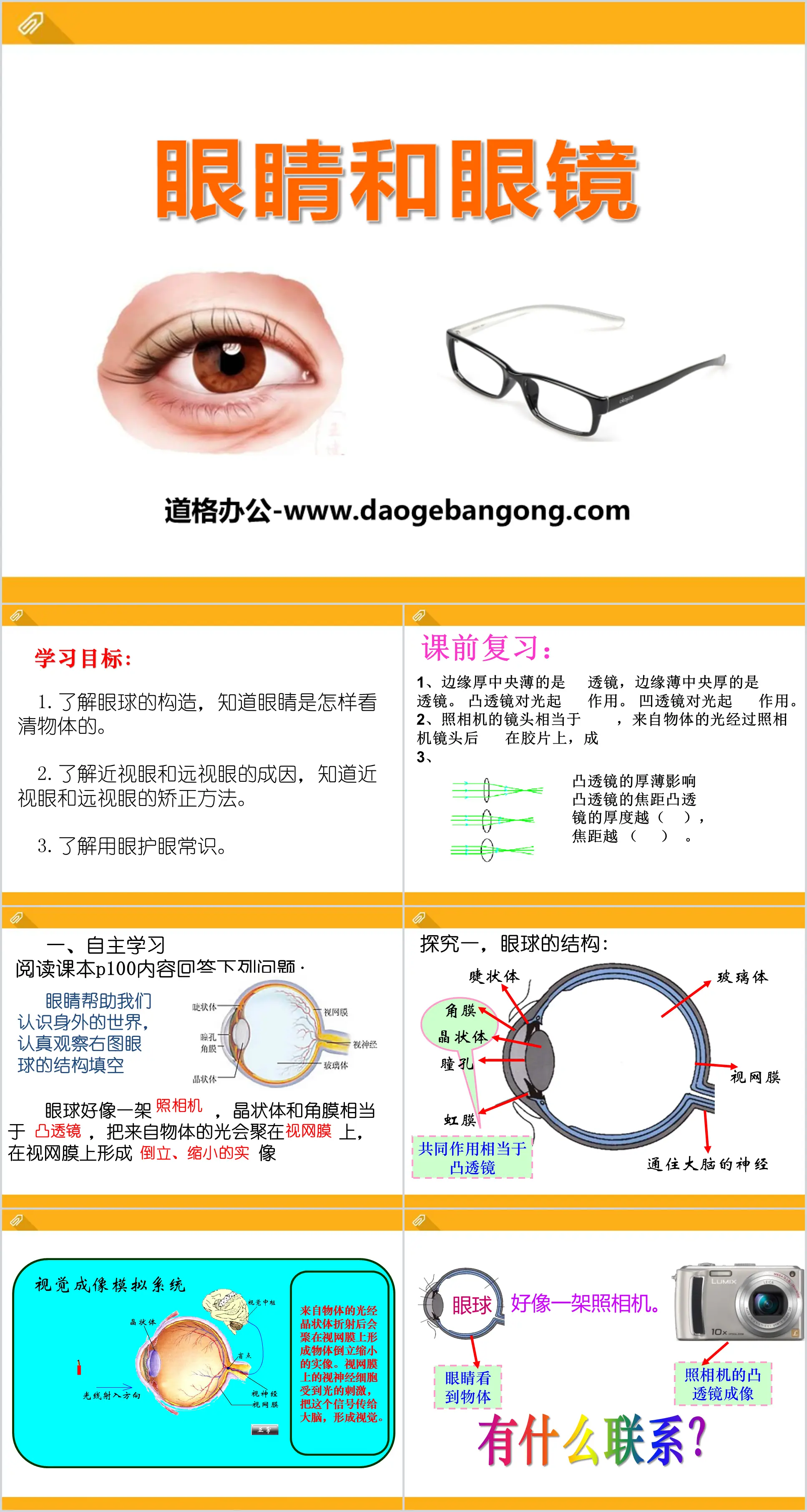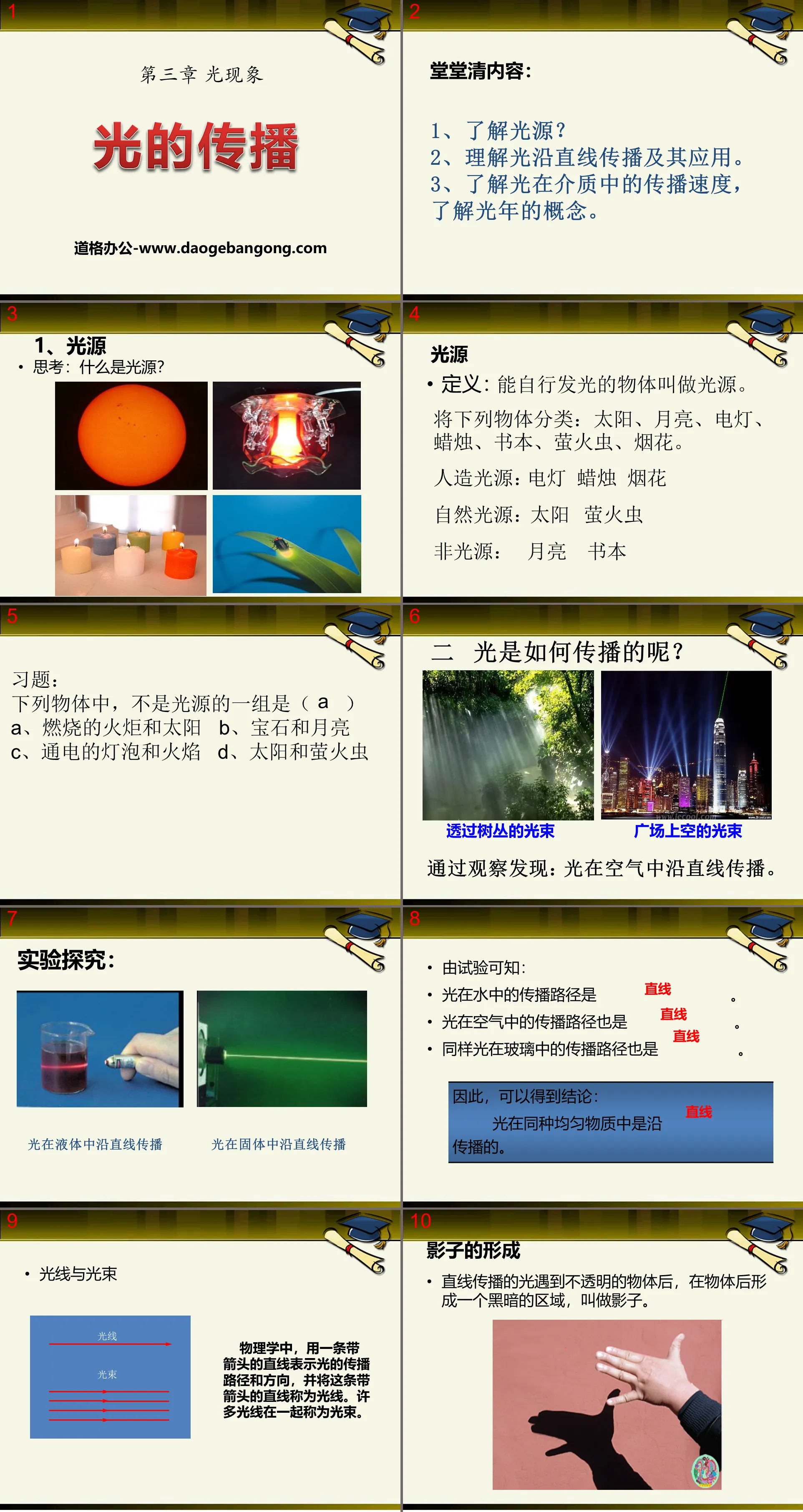"Eyes and Glasses" Lenses and Their Applications PPT Courseware 6 Simple campus recruitment activity planning plan summary enterprise and institution recruitment publicity lecture PPT template is a general PPT template for business post competition provided by the manuscript PPT, simple campus recruitment activity planning plan summary enterprise and institution recruitment promotion Lecture PPT template, you can edit and modify the text and pictures in the source file by downloading the source file. If you want more exquisite business PPT templates, you can come to grid resource. Doug resource PPT, massive PPT template slide material download, we only make high-quality PPT templates!
| 文件名 如何下载使用 | 下载次数 | Download Points | 下载地址 |
|---|---|---|---|
| "Eyes and Glasses" Lense... | 22825次 | 0.00 | Free Download |
Tips: If you open the template and feel that it is not suitable for all your needs, you can search for related content "Eyes and Glasses" Lenses and Their Applications PPT Courseware 6 is enough.
How to use the Windows system template
Directly decompress the file and use it with office or wps
How to use the Mac system template
Directly decompress the file and use it Office or wps can be used
Related reading
For more detailed PPT-related tutorials and font tutorials, you can view: Click to see
How to create a high-quality technological sense PPT? 4 ways to share the bottom of the box
Notice
Do not download in WeChat, Zhihu, QQ, built-in browsers, please use mobile browsers to download! If you are a mobile phone user, please download it on your computer!
1. The manuscript PPT is only for study and reference, please delete it 24 hours after downloading.
2. If the resource involves your legitimate rights and interests, delete it immediately.
3. Contact information: service@daogebangong.com
"Eyes and Glasses" Lenses and Their Applications PPT Courseware 6, due to usage restrictions, it is only for personal study and reference use. For commercial use, please go to the relevant official website for authorization.
(Personal non-commercial use refers to the use of this font to complete the display of personal works, including but not limited to the design of personal papers, resumes, etc.)

Related reading
For more detailed PPT-related tutorials and font tutorials, you can view:Please click to see










Authoritative PPT Summary
"Eyes and Glasses" Lenses and Their Applications PPT Courseware 6
learning target:
1. Understand the structure of the eyeball and how the eye sees objects clearly.
2. Understand the causes of myopia and hyperopia, and know how to correct myopia and hyperopia.
3. Understand the common sense of eye protection.
Review before class:
1. The one with thick edges and thin center is ____ lens, and the one with thin edges and thick center is ____ lens. Convex lenses ____ light. Concave lenses ____ light.
2. The lens of a camera is equivalent to ____. The light from the object passes through the camera lens and is ____ on the film, becoming ____________
3. The thickness of the convex lens affects the focal length of the convex lens. The thicker the convex lens ( ), the greater the focal length ( ).
1. Independent learning
Read the textbook P100 and answer the following questions:
Eyes help us understand the world outside us. Carefully observe the structure of the eyeball in the picture on the right and fill in the blanks.
The eyeball is like a ____. The lens and cornea are equivalent to ____. They focus the light from the object on ____ and form a ________ image on the retina.
Explore 1, the structure of the eyeball:
The light from the object is refracted by the lens and converges on the retina to form an inverted and reduced real image of the object. The optic nerve cells on the retina are stimulated by light and transmit this signal to the brain to form vision.
Exploration 2: The principle of how the human eye sees objects clearly——
The eye uses the ciliary body to change the shape of the lens.
Normal eye accommodation—when looking at near objects
When the ciliary body contracts, the lens becomes thicker and its ability to refract light becomes stronger. Light from nearby objects converges on the retina, and the eyes can see nearby objects clearly.
do you know?
1. Has myopia brought a lot of inconvenience to our lives? What bad eye habits do you know?
2. What suggestions do you have for preventing myopia?
3. What are the benefits of doing eye exercises every day in school to protect your glasses?
What did you gain?
①The structure of the eye and its imaging principle
②Causes and correction of myopia (concave)
③Causes and correction of hyperopia (convexity)
Summary
1. The eyes are pretty big ( )
(1) The combined effect of the lens and cornea is equivalent to _____.
(2) The main structures of the eyeball are: cornea, pupil, iris, vitreous body, nerves leading to the brain, ciliary body\lens\retina
(3) When normal eyes see objects, the light converges at ( ).
2. Myopia and its correction
(1) Myopia sees the light from objects converging on ( ).
(2) Wear myopia glasses ( ) to correct it.
3. Hyperopia and its correction
(1) Hyperopia sees the light from objects converging on _____.
(2) Wear hyperopia glasses ( ) to correct it.
On-site training
1. In the structure diagram of the eyeball, ① is _______, ② is ________, and their joint function is equivalent to ______ lens; ③ is _________; ④ is _______, and what is formed on it is ______, ______ , ______ image ("upright", "inverted", "enlarged", "reduced", "real" or "virtual").
2. In the four pictures below, ______ is a diagram of a normal human eye, ______ is a diagram of a hyperopic eye, and ______ is a diagram of a myopic eye. People who are farsighted should wear ______ glasses, which are ____ lenses; people who are nearsighted should wear ______ glasses, which are ____ lenses.
3. Xiao Ming carried out the "vision correction" research activity. He placed his myopia glasses between the candle and the convex lens, as shown in Figure A on the light screen, and got an inverted, shrunken and clear real image. After taking away the glasses, the light screen The image above becomes blurry.
(1) In order to make the image on the light screen clear again, Xiao Ming should ___________ without moving the positions of the light screen and the convex lens.
If he reads without glasses, the book should be placed ______ ("closer" or "far away") from his eyes.
(2) Among the four small pictures shown in Figure B, the one that correctly represents the imaging condition of myopia is the _____ picture, and its correction method is the _____ picture; the one that correctly represents the imaging condition of myopia is the _____ picture, and its correction method is It’s a _____ picture.
Keywords: Lens and its application teaching courseware, Eyes and glasses teaching courseware, Lujiao edition eighth grade physics PPT courseware download, eighth grade physics slide courseware download, Lens and its application PPT courseware download, Eyes and glasses PPT courseware download, .PPT format;
For more information about the PPT courseware "Lens and Its Applications in Eyes and Glasses", please click the "Lens and Its Applications ppt Eyes and Glasses ppt" tag.
"Eyes and Glasses" Lenses and Their Applications PPT Courseware 8:
"Eyes and Glasses" Lenses and Their Applications PPT Courseware 8 Learning Objectives 1. What are the main parts of the human eye? 2. How do human eyes see objects? 3. How does the human eye see objects at different distances? 4. What indicates the refractive power of a lens? 5. The formation of myopia..
"Eyes and Glasses" Lenses and Their Applications PPT Courseware 7:
"Eyes and Glasses" Lenses and Their Applications PPT Courseware 7 Think about what you know about your eyes. How do the eyes see these objects? 1. Eyes 1. Structure of the eyeball (1) Lens and cornea: the combined effect is equivalent to A convex lens (2) retina: quite...
"Eyes and Glasses" Common Optical Instruments PPT Courseware 4:
"Eyes and Glasses" Common Optical Instruments PPT Courseware 4 1. The structure of the eye and imaging principles 1. The structure of the eyeball ① What does the structure of the eyeball look like what we have learned before? ②What is the equivalent of the combined effect of the lens and the cornea? What is the equivalent of retina? Come..